Name Kaspar Hauser | ||
 | ||
Born 30 April 1812 (?) ( 1812-04-30 ) Unknown Known for Mysterious origins and untimely death Similar People Silvia Calderoni, Bruno S, Victor of Aveyron, Andre Eisermann, Davide Manuli | ||
Kaspar hauser a problem of logic
Kaspar Hauser (30 April 1812 (?) – 17 December 1833) was a German youth who claimed to have grown up in the total isolation of a darkened cell. Hauser's claims, and his subsequent death by stabbing, sparked much debate and controversy. Theories propounded at the time linked him with the grand ducal House of Baden. These have long since been rejected by historians.
Contents
- Kaspar hauser a problem of logic
- Reinhard mey kaspar hauser 1981
- First appearance
- Hausers story about his life in a dungeon
- Further life in Nuremberg
- Cut wound
- The pistol accident
- Lord Stanhope
- Life and death in Ansbach
- Fatal stab wound
- Burial
- Medical opinions
- Hauser as hereditary prince of Baden
- Repudiation in the 1870s
- Differing DNA analyses
- References
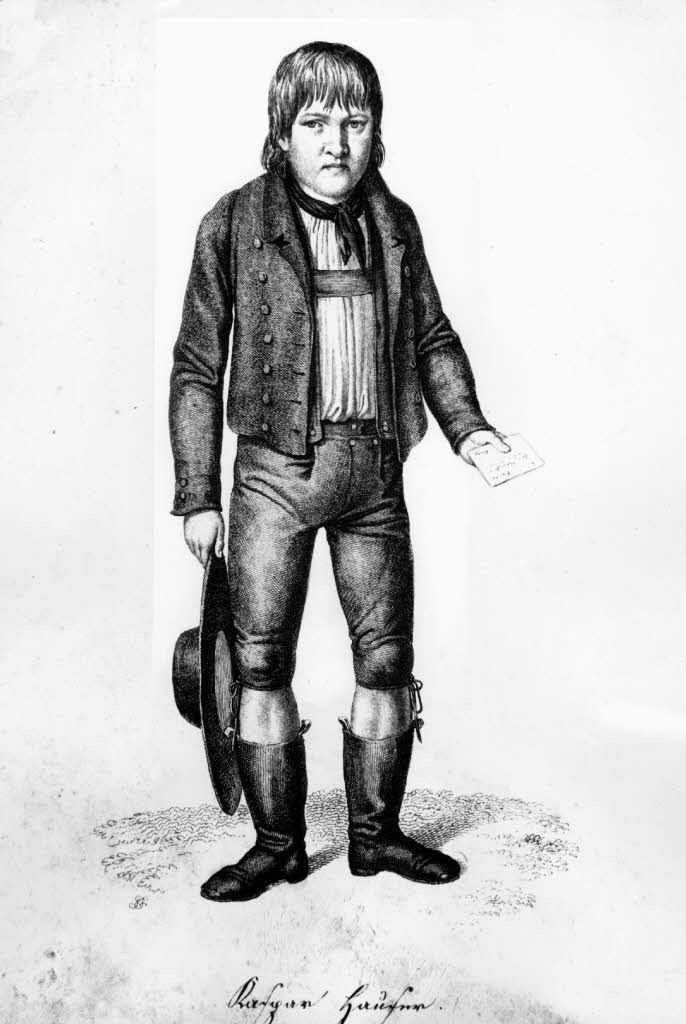
Reinhard mey kaspar hauser 1981
First appearance

On 26 May 1828, a teenage boy appeared in the streets of Nuremberg, Germany. He carried a letter with him addressed to the captain of the 4th squadron of the 6th cavalry regiment, Captain von Wessenig. Its heading read: Von der Bäierischen Gränz / daß Orte ist unbenant / 1828 ("From the Bavarian border / The place is unnamed / 1828"). The anonymous author said that the boy was given into his custody as an infant on 7 October 1812 and that he instructed him in reading, writing and the Christian religion, but never let him "take a single step out of my house". The letter stated that the boy would now like to be a cavalryman "as his father was" and invited the captain either to take him in or to hang him.
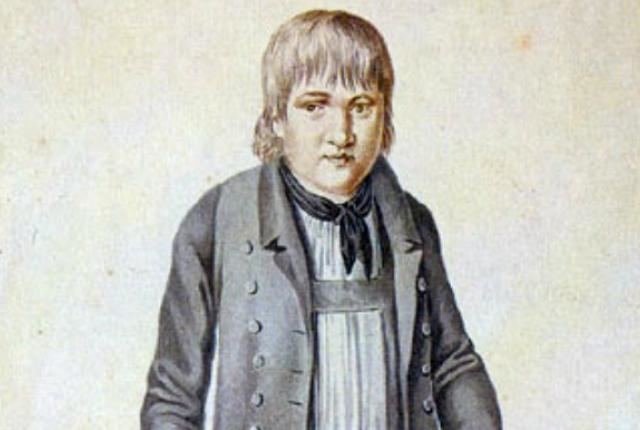
There was another short letter enclosed purporting to be from his mother to his prior caretaker. It stated that his name was Kaspar, that he was born on 30 April 1812 and that his father, a cavalryman of the 6th regiment, was dead. In fact this letter was found to have been written by the same hand as the other one (whose line "he writes my handwriting exactly as I do" led later analysts to assume that Kaspar himself wrote both of them).
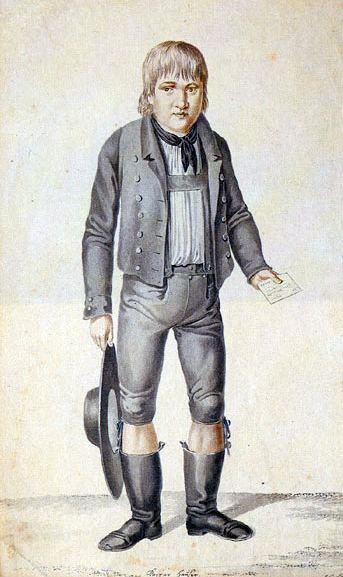
A shoemaker named Weickmann took the boy to the house of Captain von Wessenig, where he would repeat only the words "I want to be a cavalryman, as my father was" and "Horse! Horse!" Further demands elicited only tears or the obstinate proclamation of "Don't know." He was taken to a police station, where he would write a name: Kaspar Hauser. He showed that he was familiar with money, could say some prayers and read a little, but he answered few questions and his vocabulary appeared to be rather limited. Because he provided no account of himself, he was imprisoned as a vagabond.
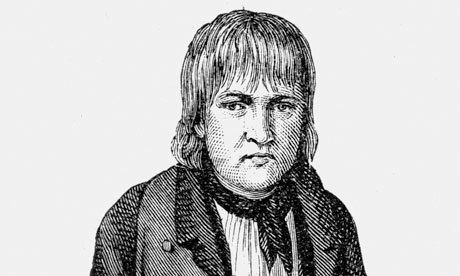
He spent the following two months in Luginsland Tower in Nuremberg Castle in the care of a jailer named Andreas Hiltel. Despite what many later accounts would say, he was in good physical condition and could walk well; for example, he climbed over 90 steps to his room. He was of a "healthy facial complexion" and approximately 16 years old, but appeared to be intellectually impaired. Mayor Binder, however, claimed that the boy had an excellent memory and was learning quickly. Various curious people visited him to his apparent delight. He refused all food except bread and water.
Hauser's story about his life in a dungeon
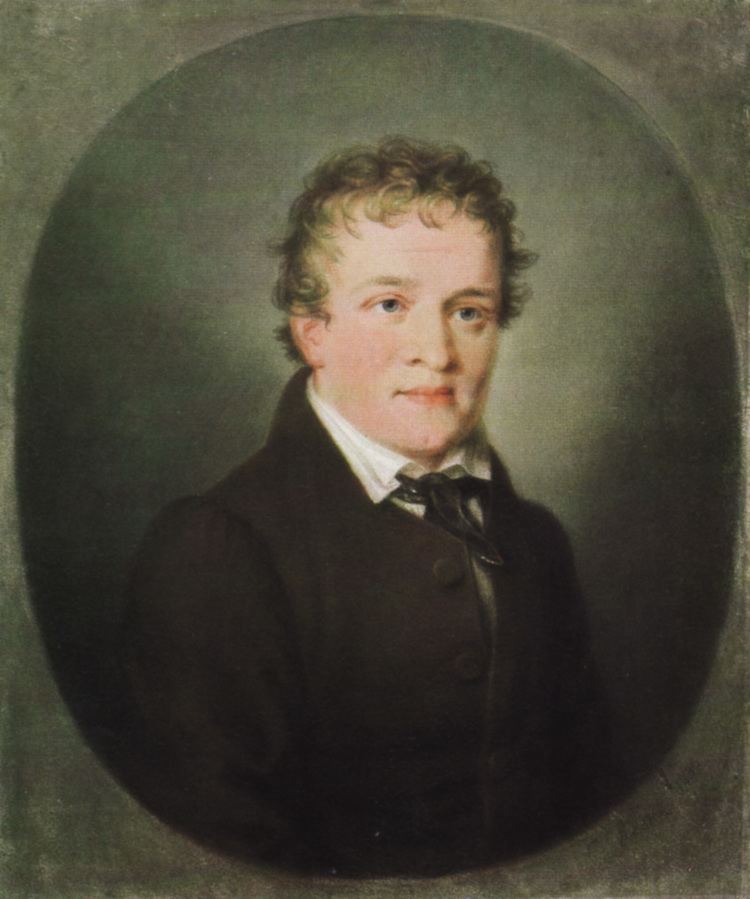
At first it was assumed that he was raised half-wild in forests, but during many conversations with Mayor Binder, Hauser told a different version of his past life, which he later also wrote down in more detail. According to this story, for as long as he could remember he spent his life totally alone in a darkened cell about two metres long, one metre wide and one and a half high with only a straw bed to sleep on and two horses and a dog carved out of wood for toys.
He claimed that he found rye bread and water next to his bed each morning. Periodically the water would taste bitter and drinking it would cause him to sleep more heavily than usual. On such occasions, when he awakened, his straw was changed and his hair and nails were cut. Hauser claimed that the first human being with whom he ever had contact was a mysterious man who visited him not long before his release, always taking great care not to reveal his face to him. This man, Hauser said, taught him to write his name by leading his hand. After learning to stand and walk, he was brought to Nuremberg. Furthermore, the stranger allegedly taught him to say the phrase "I want to be a cavalryman, as my father was" (in Old Bavarian dialect), but Hauser claimed that he did not understand what these words meant.
This tale aroused great curiosity and made Hauser an object of international attention. Rumours arose that he was of princely parentage, possibly of Baden origin, but there were also claims that he was an impostor.
Further life in Nuremberg
Paul Johann Anselm Ritter von Feuerbach, president of the Bavarian court of appeals, began to investigate the case. Hauser was formally adopted by the town of Nuremberg and money was donated for his upkeep and education. He was given into the care of Friedrich Daumer, a schoolmaster and speculative philosopher, who taught him various subjects and who thereby discovered his talent for drawing. He appeared to flourish in this environment. Daumer also subjected him to homeopathic treatments and magnetic experiments. As Feuerbach told the story, "When Professor Daumer held the north pole [of a magnet] towards him, Kaspar put his hand to the pit of his stomach, and, drawing his waistcoat in an outward direction, said that it drew him thus; and that a current of air seemed to proceed from him. The south pole affected him less powerfully; and he said that it blew upon him."
Cut wound
On 17 October 1829, Hauser did not come to the midday meal, but was found in the cellar of Daumer's house bleeding from a cut wound on the forehead. He asserted that while sitting on the privy, he was attacked and wounded by a hooded man who also threatened him with the words: "You still have to die ere you leave the city of Nuremberg." Hauser said that by the voice, he recognized the man as the one who had brought him to Nuremberg. As was obvious from his blood trail, Hauser at first fled to the first floor where his room was, but then, instead of moving on to his caretakers, he returned downstairs and climbed through a trap door into the cellar. Alarmed officials called for a police escort and transferred him to the care of Johann Biberbach, one of the municipal authorities. The alleged attack on Hauser also fueled rumours about his possible descent from Hungary, England or the House of Baden. Hauser's critics are of the opinion that he inflicted the wound on himself with a razor, which he then took back to his room before going to the cellar. He might have done so to arouse pity and thus escape chiding for a recent quarrel with Daumer, who had come to believe that the boy had a tendency to lie.
The "pistol accident"
On 3 April 1830, a pistol shot went off in Hauser's room at the Biberbachs' house. His escort hurriedly entered the room and found him bleeding from a wound to the right side of his head. Hauser quickly revived and stated that he climbed on a chair to get some books, the chair fell and while trying to hold on to something he accidentally tore down the pistol hanging on the wall, causing the shot to go off. There are doubts whether the benign wound was actually caused by the shot and some authors associate the incident with a preceding quarrel in which, again, Hauser was reproached for lying. Whatever the case, the occurrence led the municipal authorities to come to another decision on Hauser, whose initially good relationship with the Biberbach family had soured. In May 1830, he was transferred to the house of Baron von Tucher, who later also complained about Hauser's exorbitant vanity and lies. Perhaps the sharpest judgment passed on Hauser was the one by Mrs. Biberbach, who commented on his "horrendous mendacity" and "art of dissimulation" and called him "full of vanity and spite".
Lord Stanhope
A British nobleman, Lord Stanhope, took an interest in Hauser and gained custody of him late in 1831. He spent a great deal of money attempting to clarify Hauser's origin. In particular, he paid for two visits to Hungary hoping to jog the boy's memory, as Hauser seemed to remember some Hungarian words and had once declared that the Hungarian Countess Maytheny was his mother. Hauser failed to recognize any buildings or monuments in Hungary. A Hungarian nobleman who had met Hauser later told Stanhope that he and his son had a good laugh when they recollected the strange boy and his histrionic behavior. Stanhope later wrote that the complete failure of these inquiries led him to doubt Hauser's credibility. In December 1831, he transferred Hauser to Ansbach, to the care of a schoolmaster named Johann Georg Meyer, and in January 1832, Stanhope left Hauser for good. Stanhope continued to pay for Hauser's living expenses but never made good on his promise that he would take him to England. After Hauser's death, Stanhope published a book in which he presented all known evidence against Hauser, taking it as his "duty openly to confess that I had been deceived." Followers of Hauser suspect Stanhope of ulterior motives and connections to the House of Baden, but academic historiography defends him as a philanthropist, a pious man and a seeker of truth.
Life and death in Ansbach
Schoolmaster Meyer, a strict and pedantic man, disliked Hauser's many excuses and apparent lies and their relationship was thus rather strained. In late 1832, Hauser was employed as a copyist in the local law office. Still hoping that Stanhope would take him to England, he was very dissatisfied with his situation, which deteriorated further when his patron, Anselm von Feuerbach, died in May 1833. This certainly was a grievous loss to him. Some authors, however, point out that Feuerbach, by the end of his life, had lost faith in Hauser—writing a note, to be found in his legacy, which read: "Caspar Hauser is a smart scheming codger, a rogue, a good-for-nothing that ought to be killed." But there is no indication that Feuerbach, already seriously ill, let Hauser feel this change of opinion.
On 9 December 1833, Hauser had a serious argument with Meyer. Lord Stanhope was expected to visit Ansbach at Christmas and Meyer said that he did not know how he would face him.
Fatal stab wound
Five days later, on 14 December 1833, Hauser came home with a deep wound in his left breast. He said that he was lured to the Ansbach Court Garden and that a stranger stabbed him there while giving him a bag. When policeman Herrlein searched the Court Garden, he found a small violet purse containing a pencilled note in "Spiegelschrift" (mirror writing). The message read, in German:
"Hauser will be able to tell you quite precisely how I look and from where I am. To save Hauser the effort, I want to tell you myself from where I come _ _ . I come from from _ _ _ the Bavarian border _ _ On the river _ _ _ _ _ I will even tell you the name: M. L. Ö."
Hauser died of his wound on 17 December 1833.
Inconsistencies in Hauser's account led the Ansbach court of enquiry to suspect that he stabbed himself and invented a tale about being attacked. The note in the purse that was found in the Court Garden contained one spelling error and one grammatical error, both of which were typical for Hauser, who, on his deathbed, kept muttering incoherencies about "writing with pencil". Although he was very eager that the purse be found, he did not ask for its contents. The note itself was folded in a specific triangular form, just the way Hauser used to fold his letters, according to Mrs. Meyer. Forensic doctors agreed that the wound could indeed be self-inflicted. Many authors believe that he wounded himself in a bid to revive public interest in his story and to convince Stanhope to fulfil his promise to take him to England, but that he stabbed himself more deeply than planned.
Burial
Hauser was buried in the Stadtfriedhof (city cemetery) in Ansbach, where his headstone reads, in Latin, "Here lies Kaspar Hauser, riddle of his time. His birth was unknown, his death mysterious. 1833." A monument to him was later erected in the Court Garden which reads Hic occultus occulto occisus est, meaning "Here a mysterious one was killed in a mysterious manner."
Medical opinions
Hauser's various accounts of the story of his incarceration include several contradictions. Psychiatrist Karl Leonhard concluded: "If he had been living since childhood under the conditions he describes, he would not have developed beyond the condition of an idiot; indeed he would not have remained alive long. His tale is so full of absurdities that it is astonishing that it was ever believed and is even today still believed by many people."
Dr. Heidenreich, one of the physicians present at the autopsy, claimed that the brain of Kaspar Hauser was notable for small cortical size and few, non-distinct cortical gyri, indicating to some that he suffered from cortical atrophy or, as G. Hesse argued, from epilepsy. Heidenreich may have been influenced by his phrenological ideas when examining Hauser's brain. Dr. Albert, who conducted the autopsy and wrote the official report, did not find any anomalies in Hauser's brain.
Karl Leonhard rejected the views of both Heidenreich and Hesse. He came to the following conclusion: "Kaspar Hauser was, as other authors already opined, a pathological swindler. In addition to his hysterical make-up he probably had the persistence of a paranoid personality since he was able to play his role so imperturbably. From many reports on his behaviour one can recognise the hysterical as well as the paranoid trend of his personality."
A 1928 medical study supported the view that Hauser accidentally stabbed himself too deeply, while a 2005 forensic analysis argued that it seems "unlikely that the stab to the chest was inflicted exclusively for the purpose of self-damage, but both a suicidal stab and a homicidal act (assassination) cannot be definitely ruled out."
Hauser as hereditary prince of Baden
According to contemporary rumours, probably current as early as 1829, Kaspar Hauser was the hereditary prince of Baden who was born 29 September 1812, and who, according to known history, died 16 October 1812. It was alleged that this prince was switched with a dying baby and subsequently surfaced 16 years later as Kaspar Hauser in Nuremberg. In this case, his parents would have been Charles, Grand Duke of Baden and Stéphanie de Beauharnais, cousin by marriage and adopted daughter of Napoleon. Because Charles had no surviving male progeny, his successor was his uncle Louis, who was later succeeded by his half-brother, Leopold. Leopold's mother, the Countess of Hochberg, was the alleged culprit of the boy's captivity. The Countess was supposed to have disguised herself as a ghost, the "White Lady", when kidnapping the prince. Her motive evidently would have been to secure the succession for her sons.
After Hauser's death, it was claimed further that he was murdered, again because of his being the prince.
Repudiation in the 1870s
In 1876, Otto Mittelstädt presented evidence against this theory based on the official documents about the prince's emergency baptism, autopsy and burial. Andrew Lang summarizes the results in his Historical Mysteries: "It is true that the Grand Duchess was too ill to be permitted to see her dead baby, in 1812, but the baby's father, grandmother, and aunt, with the ten Court physicians, the nurses and others, must have seen it, in death, and it is too absurd to suppose, on no authority, that they were all parties to the White Lady's plot." Historian Fritz Trautz went so far to write: "The silly fairytale, which to this day moves many pens and has found much belief, was fully disproved in Otto Mittelstädt's book." Furthermore, letters of the Grand Duke's mother, published in 1951, give detailed accounts of the child's birth, illness and death, corroborating the evidence against the alleged switch of babies.
Differing DNA analyses
In November 1996, the German magazine Der Spiegel reported an attempt to match genetically a blood sample from underwear assumed to have been Hauser's. This analysis was made in laboratories of Forensic Science Service in Birmingham and in the LMU Institute of Legal Medicine at the University of Munich. Comparisons with descendants of the princely family proved that the blood examined could not possibly stem from the hereditary prince of Baden.
In 2002, the Institute for Forensic Medicine of the University of Münster analyzed hair and body cells from locks of hair and items of clothing that also belonged to Kaspar Hauser. The analysts took from the items used in the test six different DNA samples, all of which turned out to be identical, but they differed substantially from the blood sample examined in 1996, the authenticity of which was therefore questioned. The new DNA samples were compared to a DNA segment from Astrid von Medinger, a descendant in the female line of Stéphanie de Beauharnais. The sequences were not identical but the deviation observed is not large enough to exclude a relationship as the difference could be caused by a mutation. (The mitochondrial DNA which was examined is passed only through the female line and thus cannot change except through mutation.) On the other hand, the relatively high similarity by no means proves the alleged relationship, as the "Hauser samples" showed a pattern that is common among the German population.
The House of Baden does not allow any medical examination of the remains of Stéphanie de Beauharnais or of the child that was buried as her son in the family vault at the Pforzheimer Schlosskirche.
